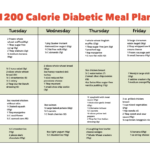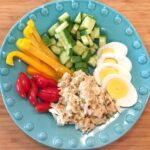Embark on a culinary journey to discover the delightful world of low-sodium, diabetic-friendly cooking! This guide unveils the secrets to crafting delicious and healthy meals that cater to specific dietary needs. Learn how to balance flavor with nutritional requirements, mastering techniques to manage blood sugar and sodium intake without sacrificing taste. Prepare to transform your kitchen into a haven of wholesome, satisfying dishes.
We’ll explore the essential nutritional considerations, offering practical tips for portion control and ingredient selection. From vibrant breakfast options to satisfying lunch and dinner recipes, we’ll provide a diverse range of meal ideas, including detailed instructions and substitutions for high-sodium ingredients. We’ll even delve into healthy snack and dessert alternatives, proving that a diabetic-friendly diet can be both delicious and enjoyable.
Snack and Dessert Options

Satisfying your sweet tooth and snack cravings while managing diabetes and sodium intake requires mindful choices. The following recipes utilize low-sodium ingredients and appropriate sweeteners to control blood sugar spikes while delivering delicious flavor. Remember to always consult your doctor or a registered dietitian to personalize your dietary plan.
Choosing the right sweetener is crucial for maintaining stable blood sugar levels. Artificial sweeteners like stevia and erythritol offer sweetness without significantly impacting blood glucose. Unlike table sugar (sucrose) or even honey, these alternatives have minimal to no effect on blood sugar, making them suitable for diabetic-friendly diets. However, moderation is still key, as even these sweeteners should be consumed in reasonable amounts as part of a balanced diet.
Diabetic-Friendly Berry Parfait
| Recipe Name | Ingredients | Instructions | Nutritional Information (per serving, approximate) |
|---|---|---|---|
| Diabetic-Friendly Berry Parfait |
|
|
Calories: ~150, Protein: ~10g, Carbohydrates: ~20g, Fat: ~5g, Sodium: <5mg |
Spiced Apple Slices with Cinnamon
| Recipe Name | Ingredients | Instructions | Nutritional Information (per serving, approximate) |
|---|---|---|---|
| Spiced Apple Slices with Cinnamon |
|
|
Calories: ~80, Protein: ~1g, Carbohydrates: ~20g, Fat: ~0g, Sodium: <5mg |
Avocado Chocolate Mousse
| Recipe Name | Ingredients | Instructions | Nutritional Information (per serving, approximate) |
|---|---|---|---|
| Avocado Chocolate Mousse |
|
|
Calories: ~180, Protein: ~4g, Carbohydrates: ~15g, Fat: ~15g, Sodium: <5mg |
Creating delicious, low-sodium, and diabetic-friendly meals is not just about following recipes; it’s about embracing a lifestyle change that prioritizes both health and pleasure. By understanding the principles of portion control, mindful ingredient choices, and smart cooking techniques, you can effortlessly prepare meals that are both nutritious and incredibly satisfying. This journey empowers you to take control of your health, one delicious bite at a time. Enjoy the process of discovering new flavors and creating a personalized meal plan that nourishes your body and delights your taste buds.
Essential Questionnaire
Can I use artificial sweeteners in these recipes?
While some recipes may incorporate artificial sweeteners, it’s crucial to choose them wisely and be mindful of their potential impact on blood sugar levels. Always check the nutritional information and consider consulting with your doctor or a registered dietitian.
How often should I adjust my meal plan?
Regularly reviewing and adjusting your meal plan is essential. Your body’s needs may change over time, and you might discover new preferences. Consider making adjustments every few weeks or months based on your progress and feedback from your healthcare provider.
What if I don’t like some of the suggested ingredients?
Feel free to substitute ingredients based on your preferences and dietary needs. However, ensure that the substitutions maintain the low-sodium and diabetic-friendly nature of the recipe. For example, you can swap out certain vegetables or protein sources while keeping the overall nutritional profile balanced.
Are there any specific cooking equipment I need?
Most recipes can be prepared with standard kitchen equipment. However, depending on the recipe, you may need specific tools such as a food processor, slow cooker, or grill. The recipes will clearly indicate any specialized equipment required.


